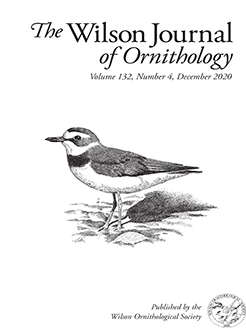We describe basic information about the nesting ecology of the recently discovered Blue-throated Hummingbird (Oreotrochilus cyanolaemus) based on a single nest found in Cerro de Arcos in the high Andes of southwestern Ecuador. The nest was located inside a small cave, attached to a rock wall, and was constructed with moss, rootlets, twigs, dry leaves, and black and white feathers, as well as soft down Puya sp. (Bromeliaceae) fibers. The nest contained 2 white, oval eggs. The fledglings left the nest to explore areas outside the cave 44 d after hatching; both fledglings already had the characteristic blue throat of male individuals. The Blue-throated Hillstar is a threatened species and its nesting area is currently affected by unmanaged tourism.
How to translate text using browser tools
14 September 2021
On the breeding biology of the Blue-throated Hillstar (Oreotrochilus cyanolaemus), a recently discovered species from southern Ecuador
Paul A. Molina,
Daniel O. Pacheco,
Agustín U. Carrasco,
Boris A. Tinoco
ACCESS THE FULL ARTICLE





